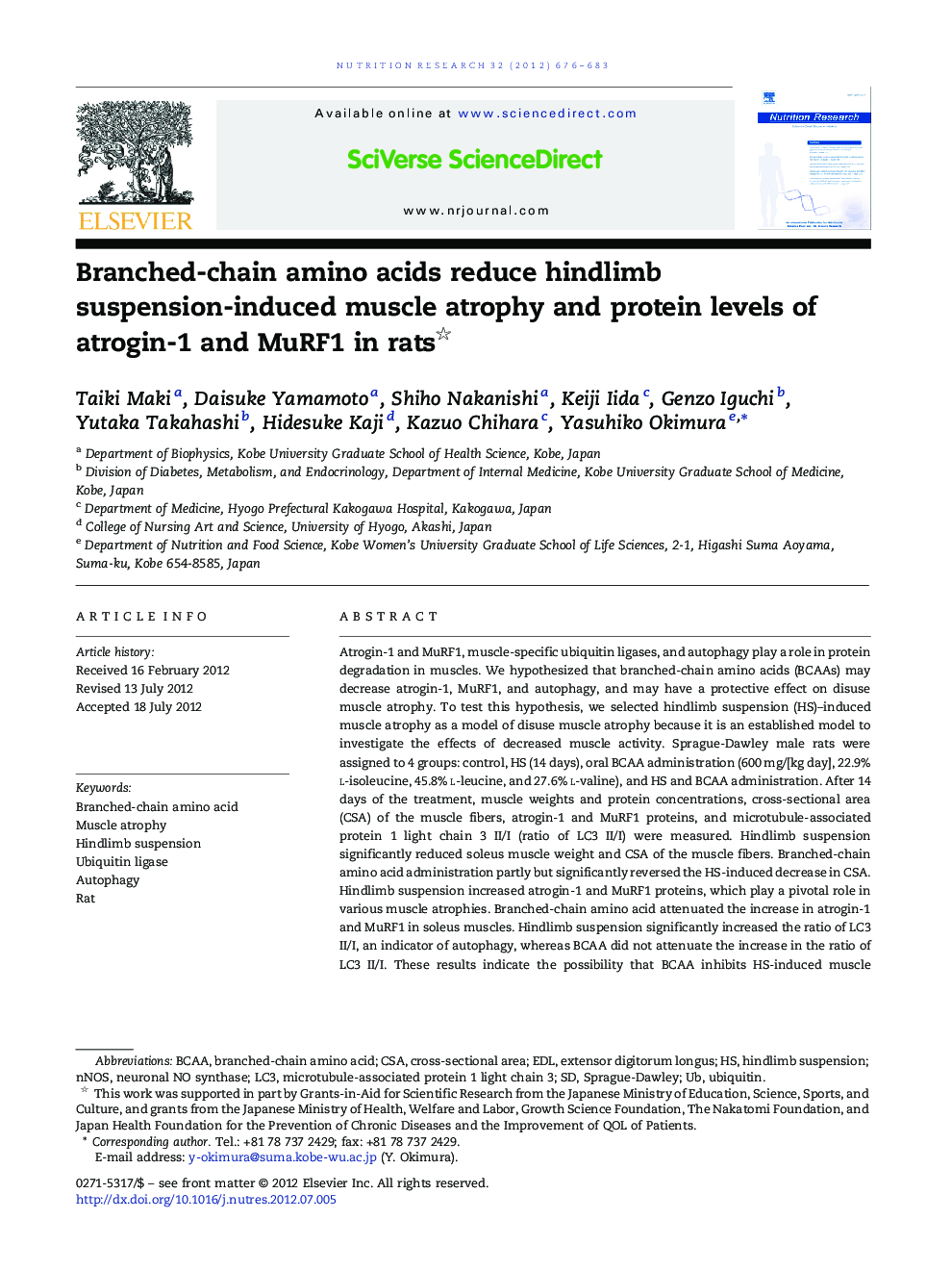| کد مقاله | کد نشریه | سال انتشار | مقاله انگلیسی | نسخه تمام متن |
|---|---|---|---|---|
| 2809311 | 1158033 | 2012 | 8 صفحه PDF | دانلود رایگان |

Atrogin-1 and MuRF1, muscle-specific ubiquitin ligases, and autophagy play a role in protein degradation in muscles. We hypothesized that branched-chain amino acids (BCAAs) may decrease atrogin-1, MuRF1, and autophagy, and may have a protective effect on disuse muscle atrophy. To test this hypothesis, we selected hindlimb suspension (HS)–induced muscle atrophy as a model of disuse muscle atrophy because it is an established model to investigate the effects of decreased muscle activity. Sprague-Dawley male rats were assigned to 4 groups: control, HS (14 days), oral BCAA administration (600 mg/[kg day], 22.9% l-isoleucine, 45.8% l-leucine, and 27.6% l-valine), and HS and BCAA administration. After 14 days of the treatment, muscle weights and protein concentrations, cross-sectional area (CSA) of the muscle fibers, atrogin-1 and MuRF1 proteins, and microtubule-associated protein 1 light chain 3 II/I (ratio of LC3 II/I) were measured. Hindlimb suspension significantly reduced soleus muscle weight and CSA of the muscle fibers. Branched-chain amino acid administration partly but significantly reversed the HS-induced decrease in CSA. Hindlimb suspension increased atrogin-1 and MuRF1 proteins, which play a pivotal role in various muscle atrophies. Branched-chain amino acid attenuated the increase in atrogin-1 and MuRF1 in soleus muscles. Hindlimb suspension significantly increased the ratio of LC3 II/I, an indicator of autophagy, whereas BCAA did not attenuate the increase in the ratio of LC3 II/I. These results indicate the possibility that BCAA inhibits HS-induced muscle atrophy, at least in part, via the inhibition of the ubiquitin-proteasome pathway. Oral BCAA administration appears to have the potential to prevent disuse muscle atrophy.
Journal: Nutrition Research - Volume 32, Issue 9, September 2012, Pages 676–683